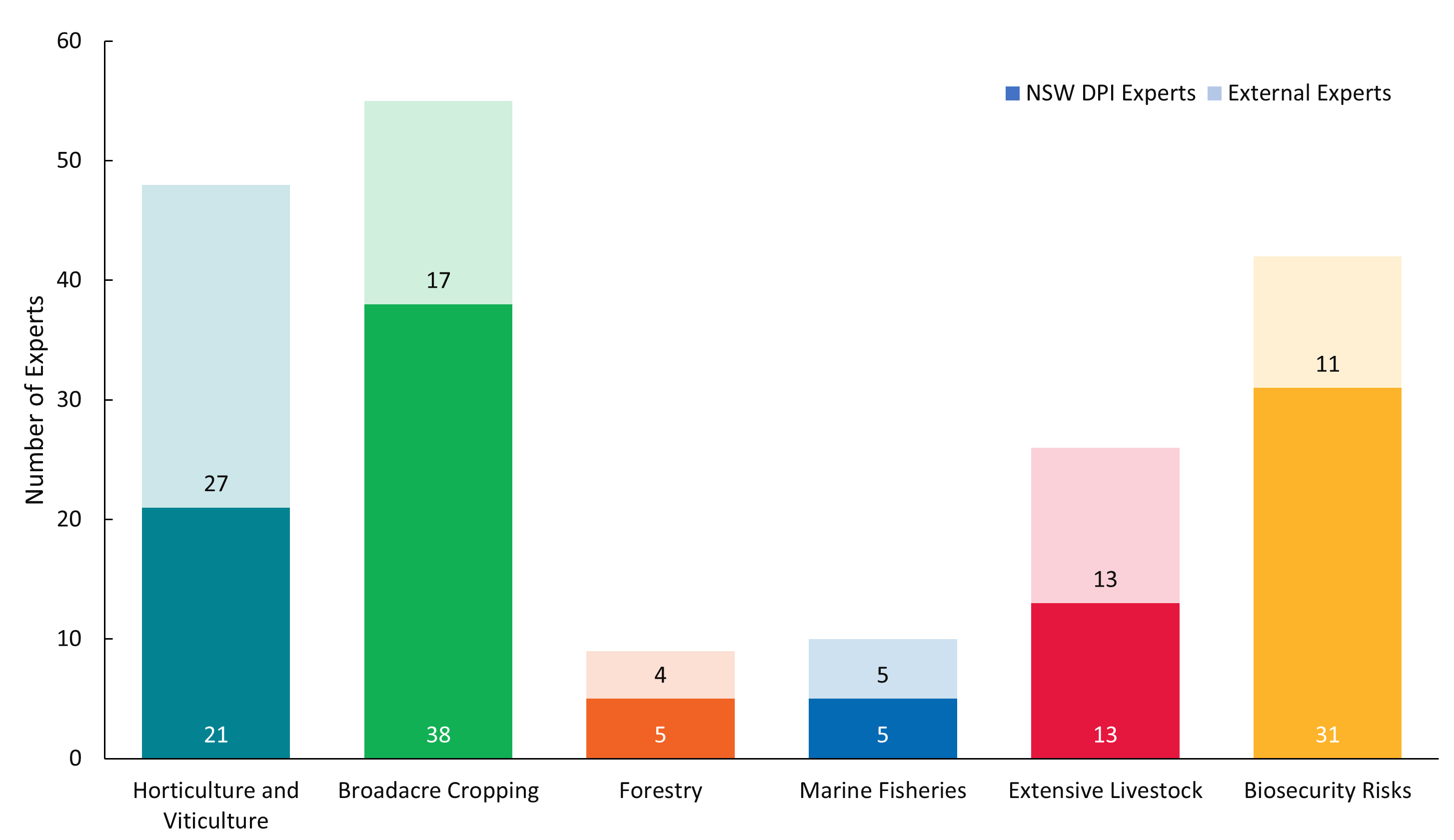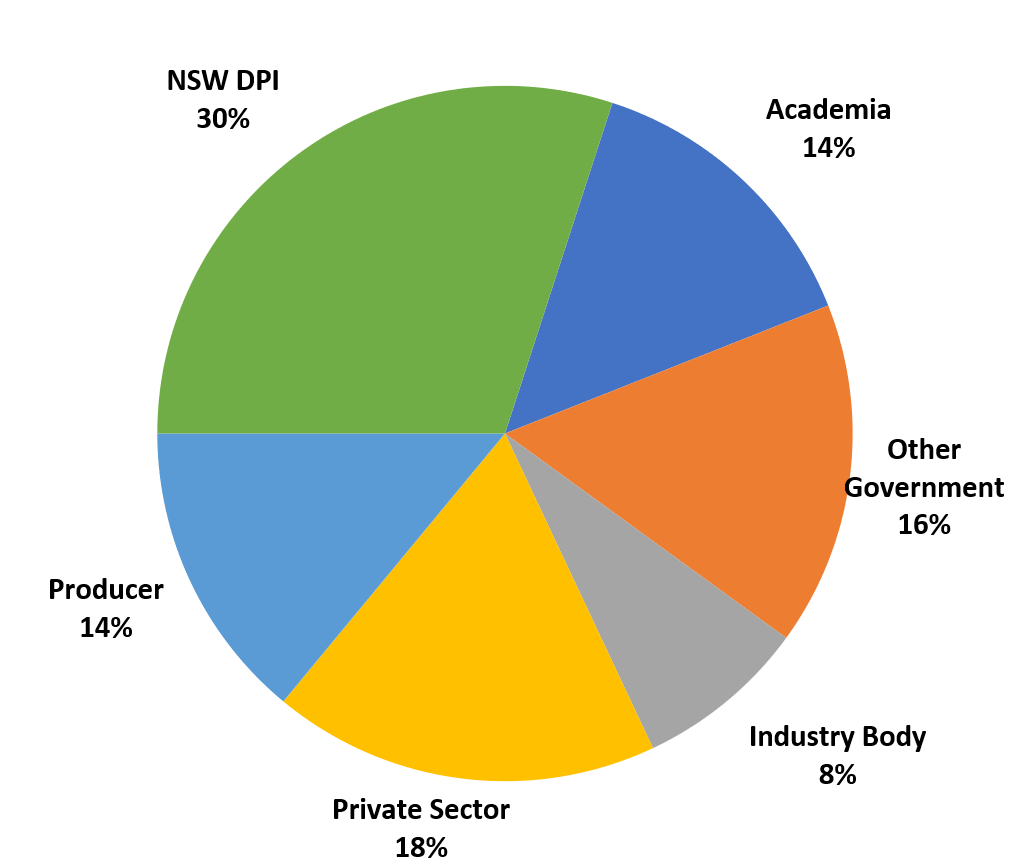Expert Collaboration
The integration of expert knowledge throughout the Climate Vulnerability Assessment was critical to completing the assessments. A literature review, undertaken prior to the assessments, revealed that there were significant knowledge gaps that would require expert assistance for the assessments to proceed. A standardised framework was applied to solicit expert involvement at several stages in the model development and climate vulnerability assessment process (see the project framework page for more information).
The diagram below shows the integral role that expert knowledge played in the climate vulnerability assessments. The collaborative nature of the modelling approach to filling important data gaps would not have been not possible without the willing assistance of experts.

To expedite the collaborative process, focus groups were set up for each model developed (one for each commodity and biosecurity risk) with between 2-6 experts contributing. These focus groups of experts were convened to serve two key purposes:
- Review draft models and apply their expert knowledge, thus ensuring that the contents of the models reflect both published knowledge and lived experiences.
- Complete the weighting process: each model is made up of different life stages and then each life stage is broken up into relevant climate variables. Each part of the model was reviewed and weighted to determine its relative importance to the overall climate suitability of each commodity or biosecurity risk.
The Climate Vulnerability Assessment involved 113 NSW DPIRD-based and 77 external experts. In total, 190 collaborators supported the review and refinement of the models through their participation in focus groups.


Experts included academics, consultants, industry representatives, government staff from NSW, and other government agencies in Australia or abroad. The goal was to have a balance of perspectives to validate and enhance confidence in the MCA models. Furthermore, the experts’ experience assisted in filling the knowledge gaps that could not be addressed using the scientific literature alone. The Climate Vulnerability Assessment oversaw 45 focus groups, mainly via online video conferencing.
Thus, the models developed in the Climate Vulnerability Assessment were developed with the support and approval of industry, and the resulting body of work represents a broad consensus across NSW’s primary industries communities.